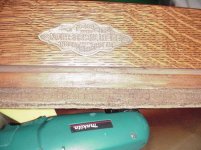Hello Everyone,
I am changing out my Tour edition Rubber for Brunswick Super Speed on the antique "whatever it is" table. The table has played short on banks since all the work I did and I am looking to correct this. When I say playing short I mean to shoot the three rail kick to the corner pocket on the other side of the table and the cue ball hits the side rail before getting to the pocket. This is just a test I do to see if the table is banking short or long. Often this can vary with just humidity affecting the cloth.
When I originally mounted the rubber I had to mount it kind of low on the subrail like about a 1/16" to get the correct nose height. I am wondering if this is due to the subrail angle being off. Is it 21 degrees?? 22 degrees?? thought it was something like that????
I have also considered making a releif cut on the underside of the rail for the cloth to sit in like the newer tables have to get the rail lower. As it stands now the cloth just staples to the bottom of the rail and this shims the rail upwards an amount equal to the thickness of the cloth.
Just trying to figure out what the plan is before taking the table apart. Thank you for your help.
Noah
I am changing out my Tour edition Rubber for Brunswick Super Speed on the antique "whatever it is" table. The table has played short on banks since all the work I did and I am looking to correct this. When I say playing short I mean to shoot the three rail kick to the corner pocket on the other side of the table and the cue ball hits the side rail before getting to the pocket. This is just a test I do to see if the table is banking short or long. Often this can vary with just humidity affecting the cloth.
When I originally mounted the rubber I had to mount it kind of low on the subrail like about a 1/16" to get the correct nose height. I am wondering if this is due to the subrail angle being off. Is it 21 degrees?? 22 degrees?? thought it was something like that????
I have also considered making a releif cut on the underside of the rail for the cloth to sit in like the newer tables have to get the rail lower. As it stands now the cloth just staples to the bottom of the rail and this shims the rail upwards an amount equal to the thickness of the cloth.
Just trying to figure out what the plan is before taking the table apart. Thank you for your help.
Noah
Last edited:

